The idea of greenhouse structures appeared when the ancient Romans realized the concept of controlled environment agriculture, which provides protection to crops all year round rather than seasonally. Today, contemporary architects are rethinking and reinterpreting what a greenhouse can be, and how it can best be used to better our lives.

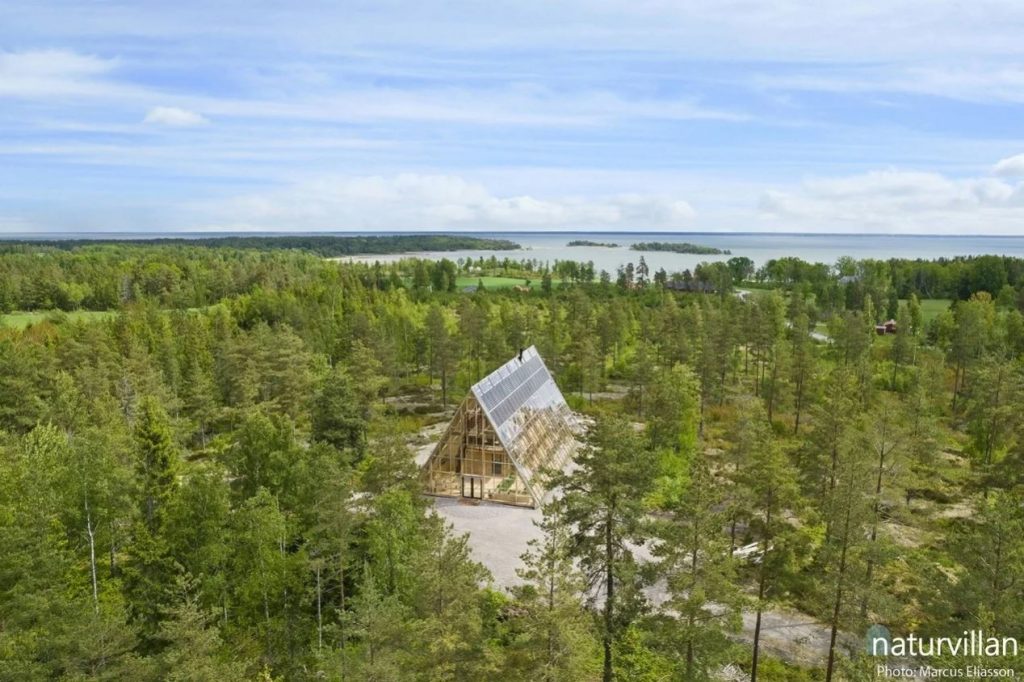
Atri by Naturvillan
Swedish company called Naturvillan creates sustainable A-frame homes that look like greenhouses with a breathtaking high ceiling filled with brightness and clean air. Named Atri, the structure is built to be climate-smart and adapt to any weather, providing residents with the opportunity to live in an eco-friendly environment.
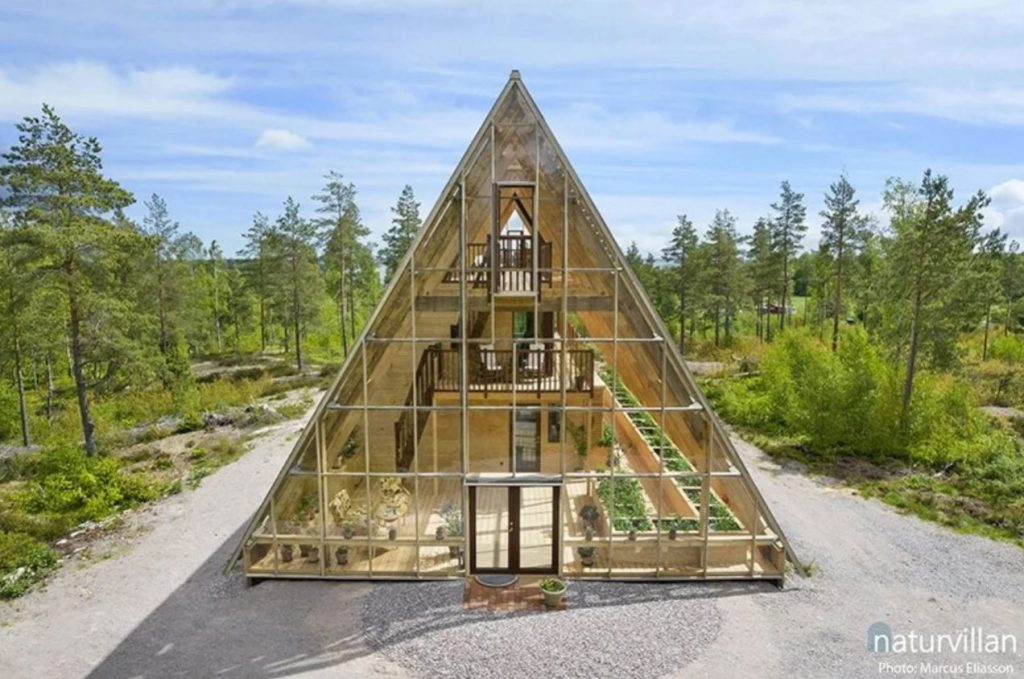

Atri by Naturvillan
Apart from the natural ventilation and lighting, the property has its own drilled well so occupants can get drinking water that harvested from the plant beds in the greenhouse and purified. The wood-fired kitchen pan not only powers the oven for cooking but also provides residents with heat and hot water in winter, while solar cells generate electricity on summer days.
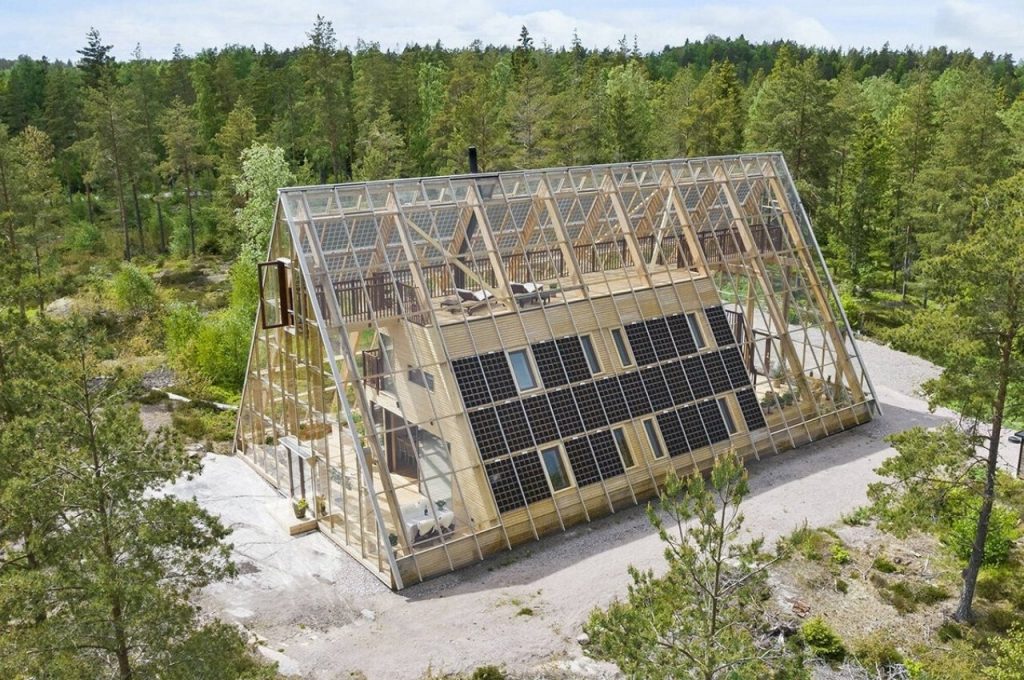
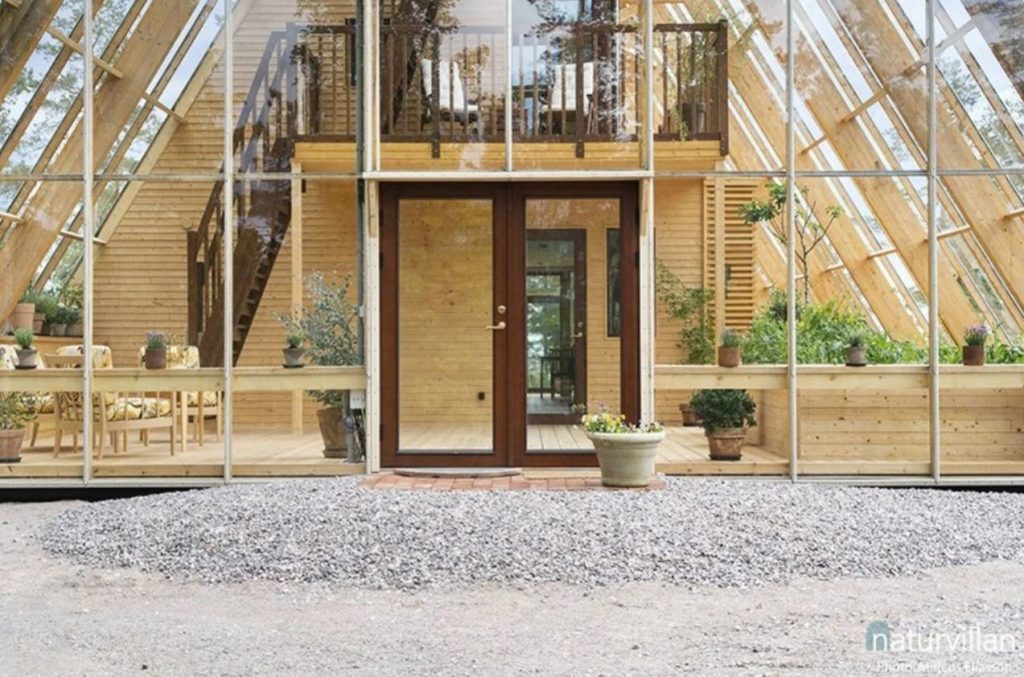
Atri by Naturvillan
The all-glazed design offers fantastic living areas with plenty of light and space. The dwelling includes a spacious entry hall, bedrooms, a comfortable kitchen and dining room, a library and a luxurious bathroom, all lined in wood to give the house a cozy feeling, as well as a roof top terrace. Besides, the house is easy to expand and extend in the future.
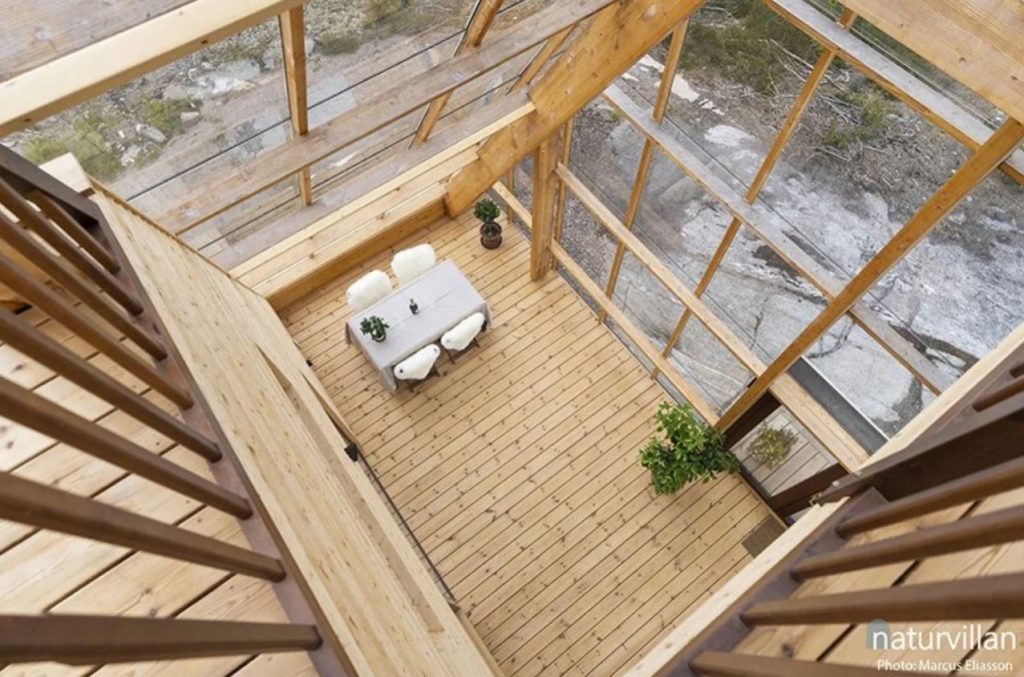
Atri by Naturvillan
All this makes the greenhouse of a residence perfect for when you want to practice off-grid living and still have a magnificent view when you look outside of your house.

Äng by Norm Architects (also header image)
Designed by Danish studio Norm Architects, Äng is a Michelin-starred restaurant located in the middle of a meadow in Ästad Vingård – one of Sweden’s largest vineyards. The design of this minimal building resembles an inside-out greenhouse, with the steel structure on the inside and a smooth exterior of glass panels that reflects unspoiled Nordic nature around.
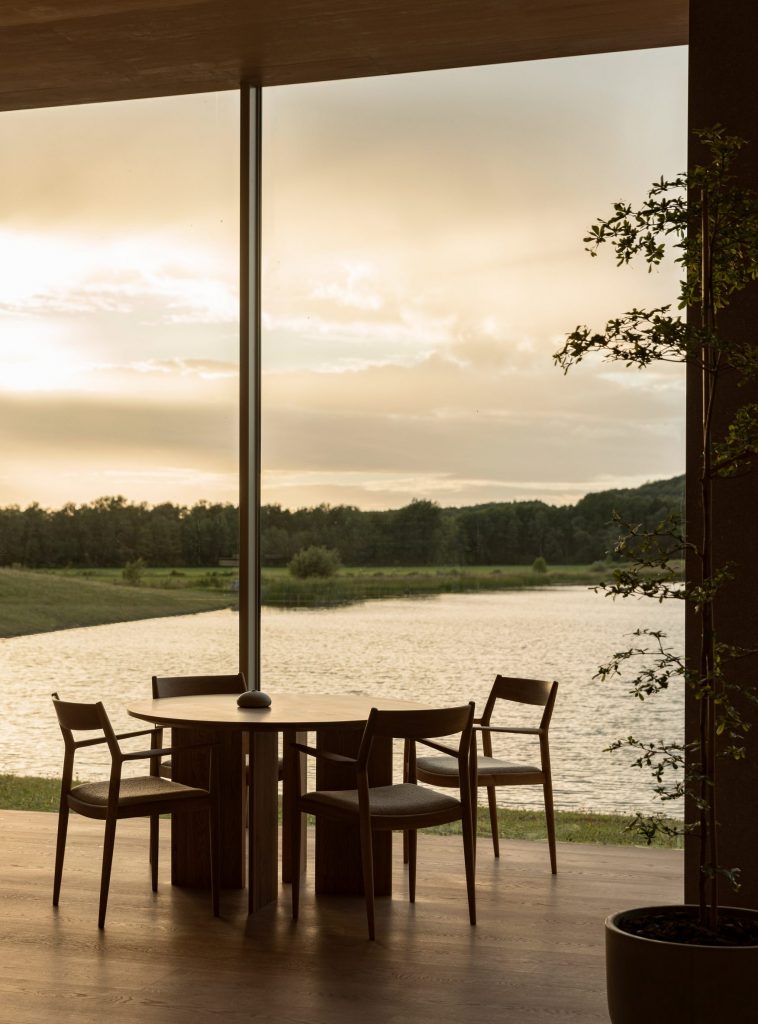
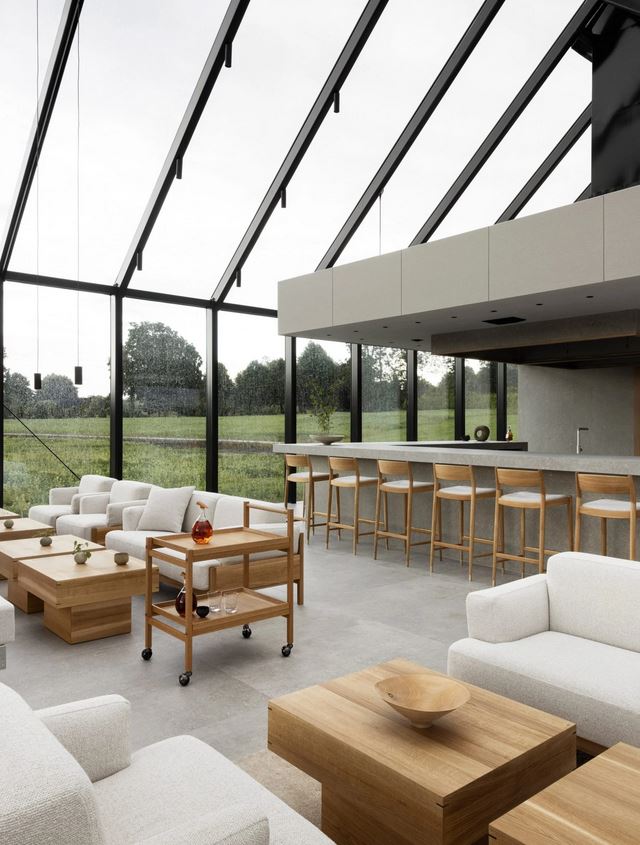
Äng by Norm Architects
Inside, the glass building is designed to give diners a holistic, sensory experience of sitting in the middle of the meadow with nothing but clear skies overhead. The interiors are complemented with furniture designed exclusively for the restaurant and constructed from solid oak.

Äng by Norm Architects
A hidden elevator transports guests of the restaurant underground to a subterranean wine cellar with a dark cave-like lounge setting in its centre, which helps intensify the remaining senses as the vision weakens.
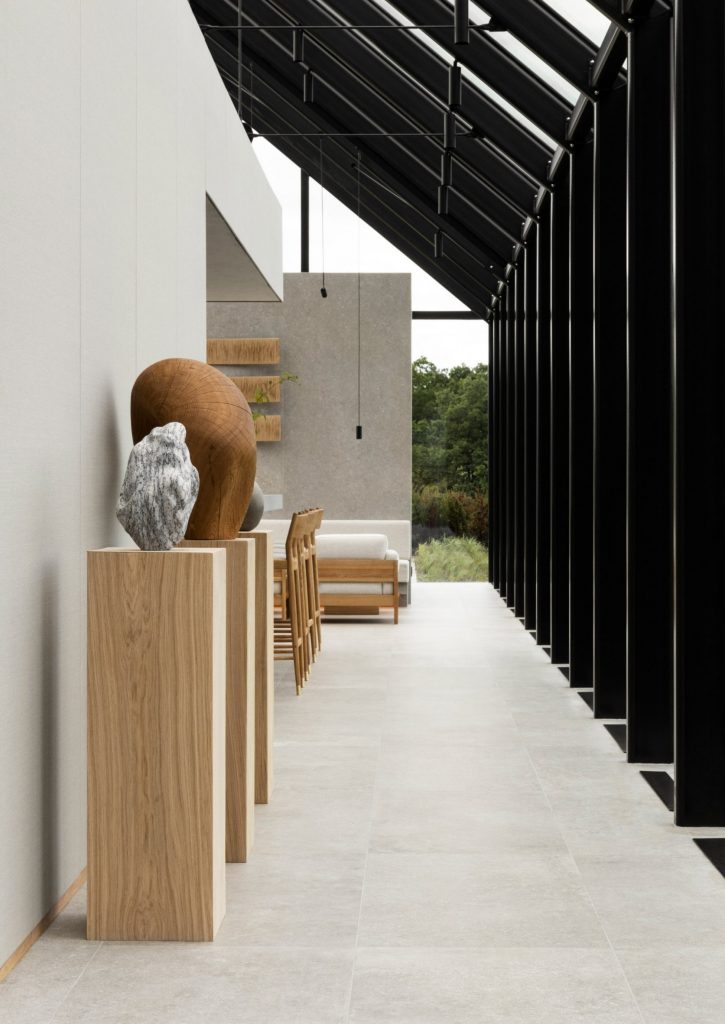
Äng by Norm Architects
The glasshouse-like design enabled the architects to play on the phenomenon of chiaroscuro with the changing of light. This technique from visual arts is used to represent light and shadow as they define objects in order to achieve a sense of volume.
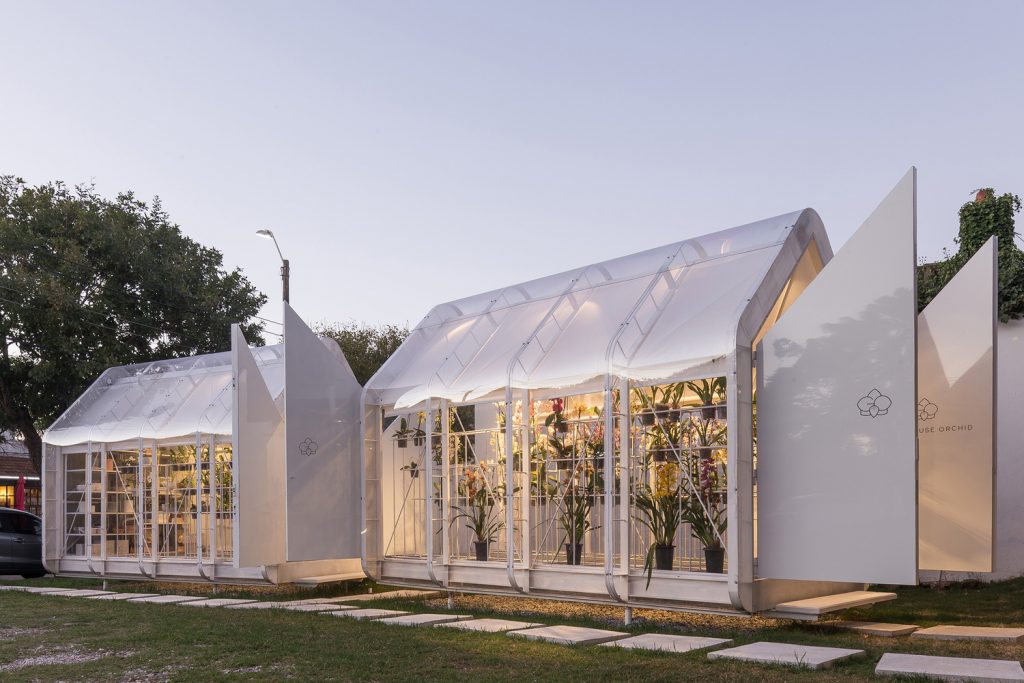
Greenhouse Orchid by Mateo Nunes Da Rosa
During the Covid-19 pandemic, Uruguay-based studio Mateo Nunes Da Rosa was commissioned to design a greenhouse that would also serve as an exhibition space. The team created two glass volumes, one of which is intended for exhibition and the other one for planting flowers. The structures are made of compact polycarbonate sheets and composite aluminum set on steel chassis, and their dimensions are defined by the total transport volume.

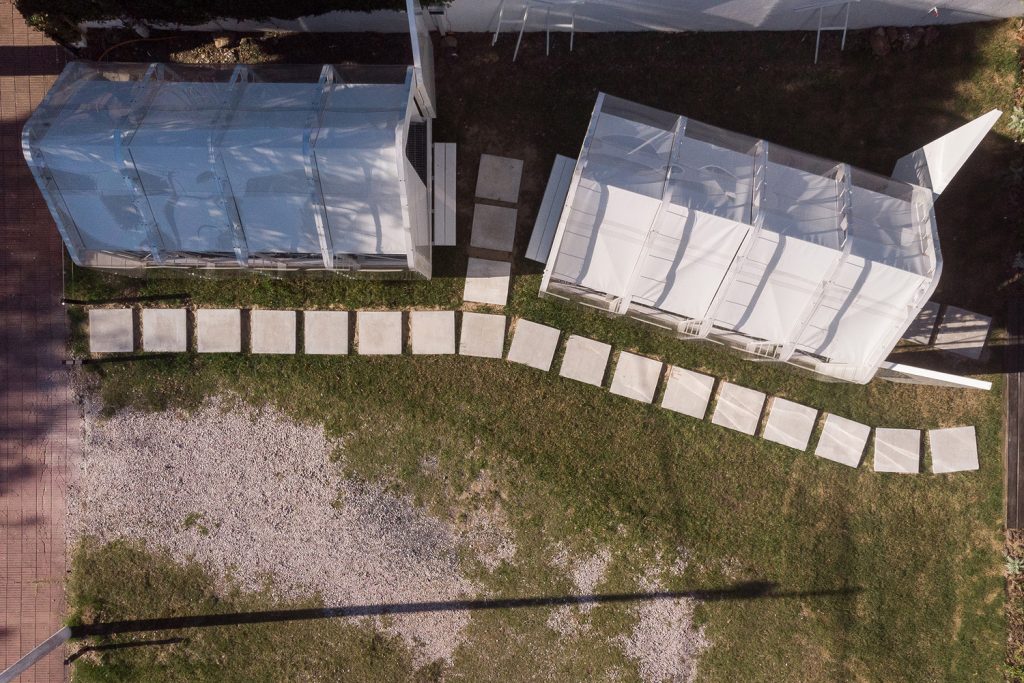
Greenhouse Orchid by Mateo Nunes Da Rosa
The double shell of the greenhouse helps must control temperature, lighting, humidity, ventilation, irrigation and nutrients despite the outside climate.
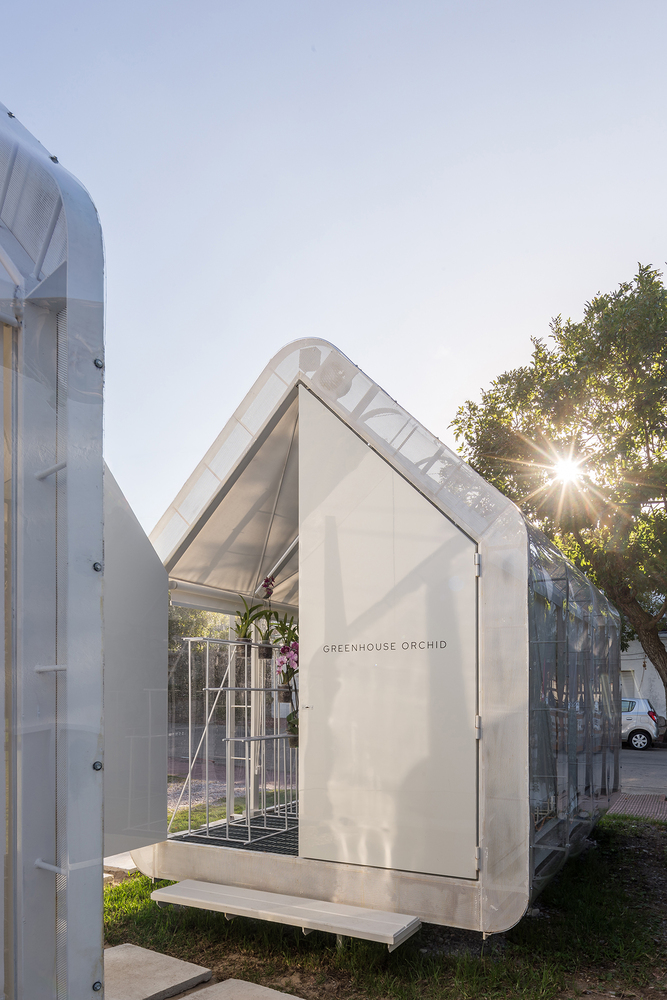
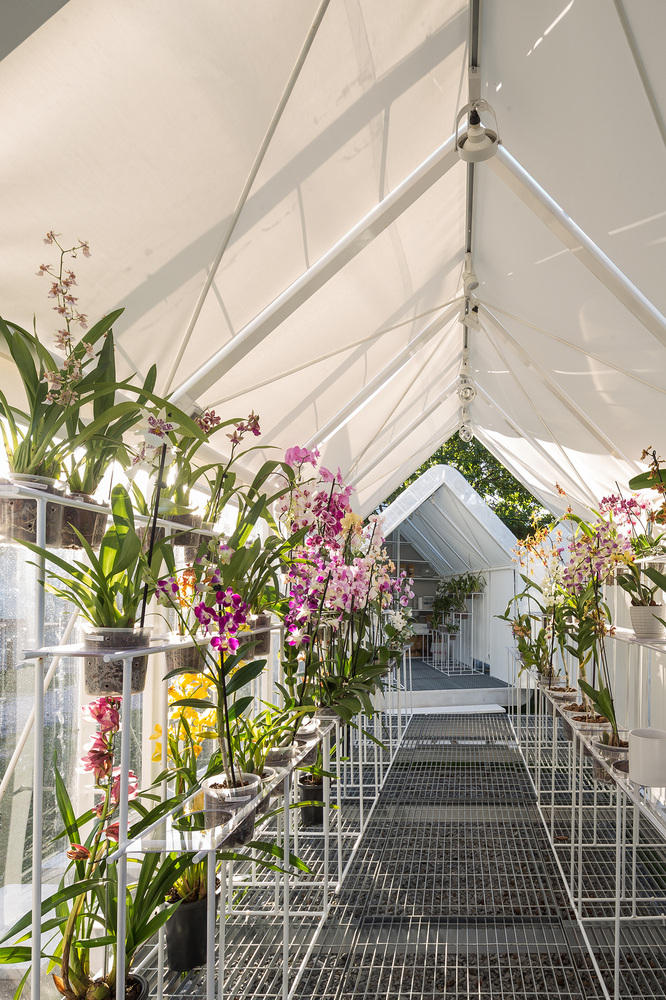
Greenhouse Orchid by Mateo Nunes Da Rosa
The outer translucent membrane protects plants from low temperatures and directs the wind towards the air intake, while the inner membrane blocks direct sunlight and allows views of the surroundings. Between the membranes, a ventilated chamber is formed. On the sides of the greenhouse, two large doors are installed, creating a second natural ventilation tunnel.